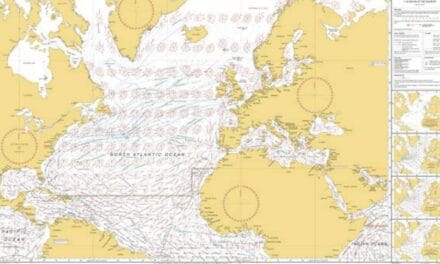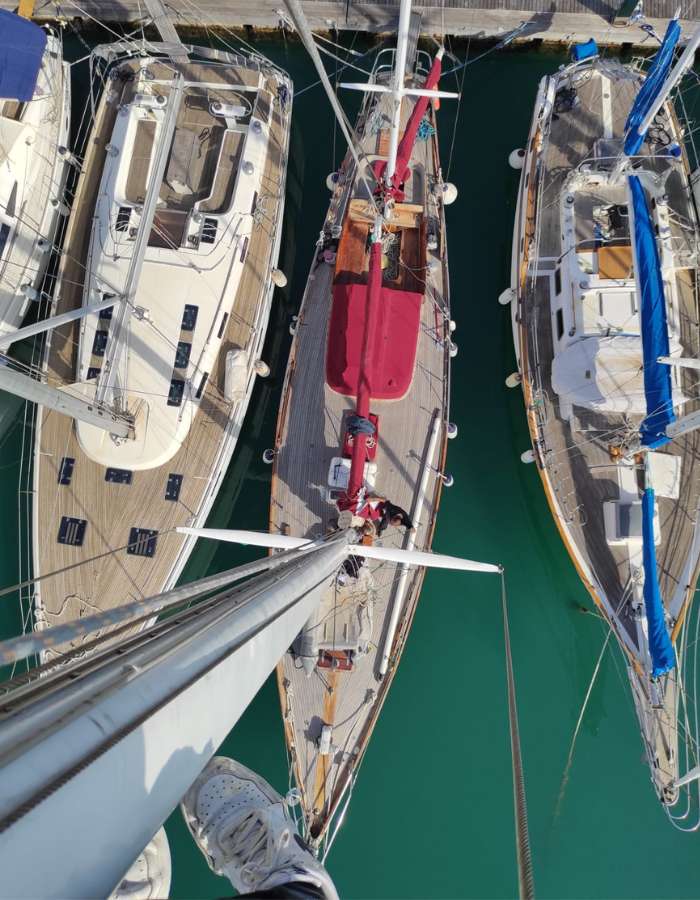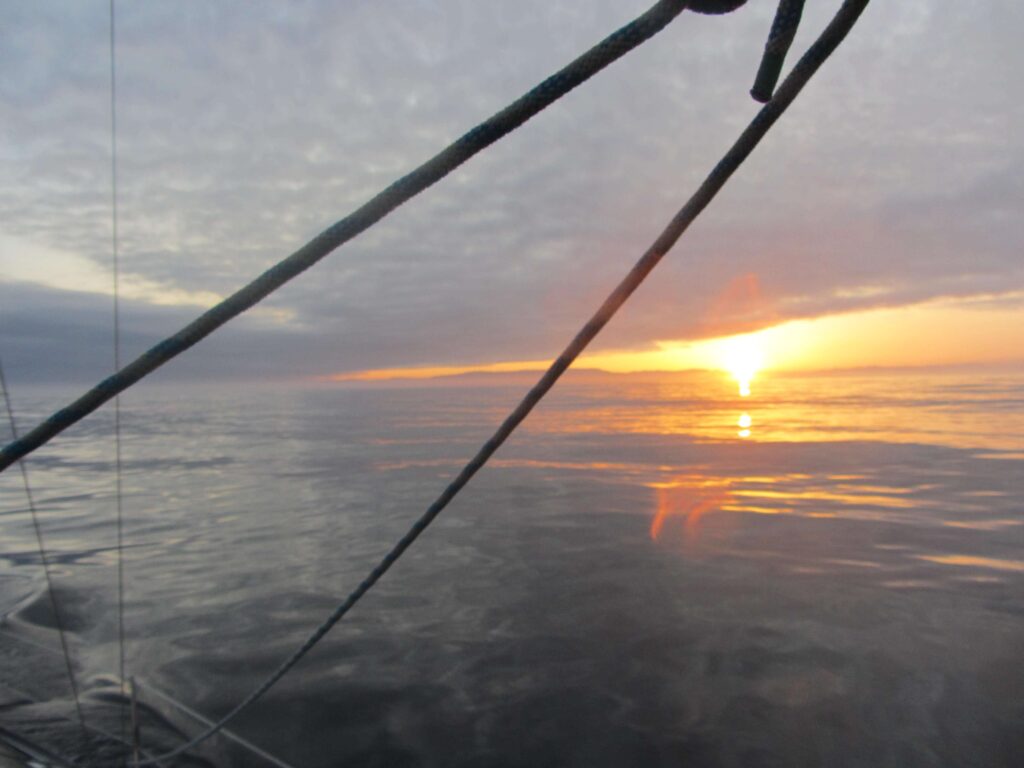
Introduction to Sailing Across the Bay of Biscay
Crossing Bay of Biscay by sailboat demands careful preparation and advanced seamanship. Choose the best crossing time by closely monitoring marine weather forecasts and study tidal currents. Equip your vessel with essential safety gear like a marine VHF radio, AIS transponder, and a weather fax system. Maintain your sailboat’s structural integrity, inspecting the rigging and storm sails thoroughly. Avoid cargo ship routes and keep a sharp eye on real-time weather updates. Use detailed nautical charts and proficient navigation techniques. Understanding these advanced methods will guarantee a safer passage. For a detailed guide on this challenging journey, continue reading below.
Traversing the Bay of Biscay, a notorious stretch of the North Atlantic Ocean, requires meticulous planning and a thorough understanding of its unique maritime challenges. As you prepare your sailboat for this voyage, it’s crucial to calculate the best crossing time. Typically, the most suitable window spans from late spring to early autumn, when weather conditions are more stable and predictable.
Weather conditions in the Bay of Biscay can be volatile, with sudden changes occurring rapidly. Regularly monitor marine weather forecasts and utilize advanced navigation tools to track approaching Lows. High winds and steep waves are common, demanding strong sail handling skills and a keen eye on your course.
Another critical factor to consider are routes of shipping lanes crisscrossing the Bay. These high-traffic zones require heightened vigilance and precise navigation to avoid collisions. Of course you can cross them but avoid tacking, especially during rainy night. AIS (Automatic Identification System) and radar are also “nice to have” equipment for tracking nearby vessels and maintaining safe distances. If you use AIS Transponder ships can see you, at least till the time your system will break 🙂 This not only guarantees safety but also minimizes stress on the crew.
Typical Dangers

Sailing through the Bay of Biscay poses several typical dangers, including less predictable weather patterns, strong winds, and steep, short-period waves that can test the limits of your vessel’s seaworthiness. The Atlantic swells here are notorious for creating challenging conditions, especially for less experienced sailors. You’ll encounter strong winds that can shift abruptly, making sail adjustments and constant vigilance essential.
Understanding the intricacies of weather forecasting is important. The Bay’s unique topography can lead to sudden, intense storms, so you’ll need to stay updated with the latest weather data. It’s not just about checking the forecast before you set sail; continuous monitoring is key to anticipating changes and adapting your course accordingly.
A significant hazard is the lee shore, particularly on the French coast. Strong winds can push your sailboat dangerously close to land, making it hard to maneuver away. This requires precise navigation and advanced techniques to keep a safe distance. Make sure your charts are up-to-date and your navigation systems are fully functional.
In these challenging conditions, your vessel’s structural integrity and your crew’s preparedness are crucial. Solid teamwork and clear communication can make all the difference in traversing these perilous waters safely.
Avoiding Problems
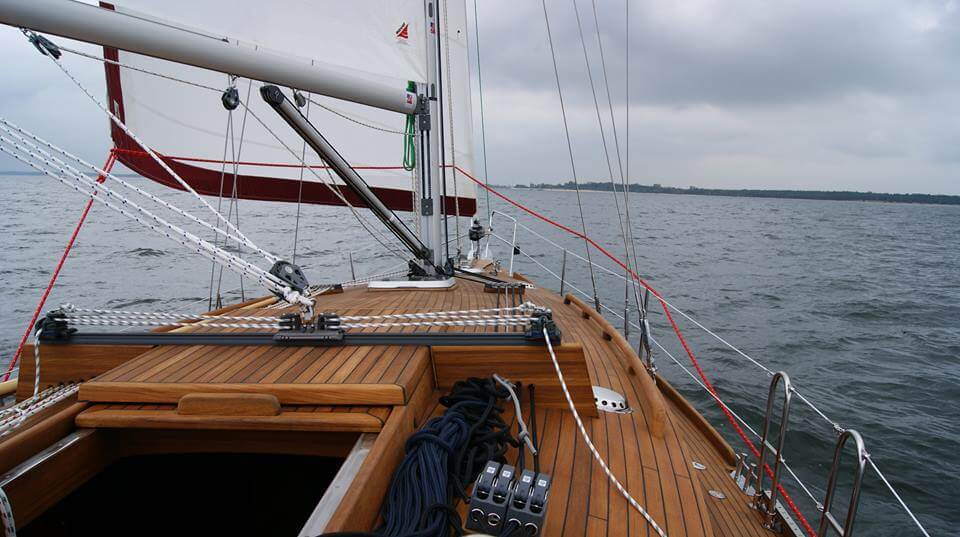
To prevent issues while traversing the Bay of Biscay, make sure you’re constantly monitoring real-time weather updates and adjusting your course as necessary. If you bought STARLINK, it’s a good time to use it 🙂
Before setting sail, wait for a weather window that promises favorable winds and calmer sea. This could mean delaying your departure, but it’s essential for a smoother passage. Better spend two days in marina bar than fight for a life for a half day. Always prepare a shelter by planning your route along the north Spanish coast or near the French coastline where natural barriers provide some respite.
Regularly check your position using GPS and cross-reference with nautical charts to identify any unexpected shifts in currents or wind patterns. Adopting these strategies will greatly reduce potential hazards and enhance your sense of belonging within the sailing community.
Best Time for Crossing Bay of Biscay by Sailboat

The ideal period for this trip is during summer, between June and September when the weather conditions are more significant and favorable for navigation. During these months, you’ll encounter longer daylight hours, which enhances visibility and safety. The prevailing westerly winds are typically more predictable, providing a reliable force for your sails. Also air and water temperature is more pleasure then snow storm during very long night 🙂
Finding the right weather window is important. You should monitor weather forecasts closely to avoid any low-pressure areas that could bring strong winds and rough seas. Advanced navigation techniques, such as using GRIB files and weather routing software, can help you make a proper decisions.
Ports along the Bay of Biscay are well-equipped during a peak season, offering decent marinas with good facilities. These marinas provide essential support, including fuel, repairs, and safe moorings, which can be crucial during your passage. Be sure, you prepared Refugee Ports which always should be in your written Passage Plan!
Sailing during summer period reduces the risk of encountering severe weather, allowing for a smoother, more enjoyable crossing. By leveraging favorable conditions and utilizing detailed navigation strategies, you’ll enhance your experience and guarantee a safer passage across this challenging yet rewarding body of water.
Preparing Your Sailboat
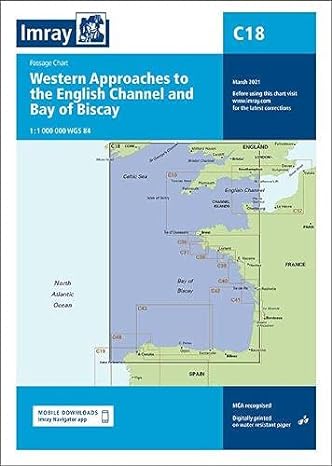

Before setting out on the Bay of Biscay, make sure your sailboat is equipped with essential safety gear like EPIRBs, AIS transponders, lifejackets and life raft to handle emergencies.
Don’t forget about Radar Reflector! Check the existing one and/or buy a new device. Consider to order an active radar reflector instead of passive one. It cost much more but it’s simply better and finally you will be more visible and safe.
You’ll need to configure your navigation systems for precise chart plotting and install advanced weather forecasting tools to anticipate rough seas.
If you are using Navionics or similar smartphone software, be sure you downloaded charts. Update them last time when you will leave port, please. There are a lot of updates every day.
Turn on your NAVTEX and check it’s setting. You have to know the proper “letters” (places of messages transmissions) and codes. You can probably turn off ice warnings 🙂
Safety Measures for Sailing in the Bay of Biscay
Ensuring your sailboat is meticulously prepared for the Bay of Biscay‘s challenging conditions is vital for a safe passage. For a successful Bay of Biscay crossing, your sailboat must be equipped to handle the strong winds and often unpredictable sea states. Start by thoroughly inspecting your rigging for wear and tear—any weakness can become a critical failure point in heavy seas.
Keep an eye on the weather forecast and plan your departure during a favorable weather window. Fast-moving fronts and sudden squalls aren’t uncommon, so be ready to adapt your route.
Your sailboat should also be equipped with a robust storm sail and a well-maintained engine to navigate through calms and adverse conditions. Check your bilge pumps and ensure they’re operational, as the Bay of Biscay’s swells can be fierce.
Keep off Whales and Orcas (killer whales). Whales often sleeps so keep a watch and look forward. Contact other boats and warn them. CHeck what does it mean Innteraction with Iberian Orcas and be prepared. Local Authorities issue special information for sailmen what to do. Never ever shoot at them, hurt them or use materials/devices that produce strong, underwater sound waves. Interacting with orcas is not a “killer whales attack”, as you can read in Facebook. The attacking animal wants to hurt you, most likely kill you. When orcas wanted to kill sailors, they would do it without a problem, and you would surely have heard about it. So don’t harm the orcas, even if they bite off your rudder
Navigating Rough Seas
Sailing through rough seas in the Bay of Biscay requires that your sailboat isn’t only seaworthy but also meticulously equipped to handle extreme conditions. The Bay of Biscay, known for its challenging weather, demands thorough preparation.
First, guarantee your hull integrity is impeccable; any compromise here could spell disaster in the tumultuous waters of the Atlantic Ocean.
Navigating rough seas involves understanding the ocean shelf time to cross. The Bay of Biscay’s shelf drops dramatically. When you imagine a massive ocean tidal water coming in and out of a Bay ou will know what causing unpredictable wave patterns. You’ll need a robust sailing experience to manage these swells effectively. Reinforce your rigging and sails to withstand high winds and sudden gusts. Inspect and secure all deck fittings to prevent failures.
Advanced techniques, such as using sea anchor, can be lifesavers. This maneuver stabilizes your boat, allowing you to ride out the storm with minimal strain on the vessel. But, it’s a solution for a well trained crew on well maintained and prepared vessel. Even then, using sea anchors is always a risk. Using it wrong can be much higher risky than not touching it at all.
It’s also essential to have a well-balanced ballast to maintain stability. Check bilge water level often, mount or tie moving elements, keep all doors closed, secure your crystal glasses! Once you’ve successfully reached port, you’ll have nothing to toast with
Your sailboat is probably equipped with a responsive steering system; autohelm / autopilots should be tested for reliability. Adapt your sailing plan to avoid the worst of the weather, and always have a backup route with prepared Ports of Refugee list.
Proper preparation fosters a sense of belonging among your crew, ensuring everyone is ready to face the Bay of Biscay’s rough seas.
Essential equipment
Equipping your sailboat for a Bay of Biscay crossing demands a vital curated selection of essential gear to guarantee safety and efficiency in this challenging maritime environment.
Start with a robust marine VHF radio with DSC capabilities and an AIS transceiver to make certain constant communication and vessel tracking. The unpredictable nature of the Bay of Biscay’s weather necessitates a reliable forecast weather system or satellite phone for real-time updates.
Remember – you can always contact shipping vessels by VHF and ask for latest info. I’m sure they will help you. I often do that. You can listen them but they can not hear you. That’s because you are too far. Try to go closer to get a good conversation
Your sailboat’s hull integrity is paramount; check for and repair any weaknesses. High-quality, well-maintained sails and rigging are essential, given the region’s notorious gales. Confirm your life raft meets SOLAS standards and is readily accessible. Check the attest valid day. The same with life jackets and extinguishers. An EPIRB (Emergency Position Indicating Radio Beacon) is indispensable for emergency situations. Prepare storm-lines and mount them well (triple check!). All crew has to be equipped with Ocean type life jackets, harnesses, lighters, sharp knife and optimism
Navigation tools should include a GPS chartplotter loaded with updated charts of the Bay of Biscay, a magnetic compass, and backup paper charts. For power, carry extra fuel and have a wind or solar generator. Heavy-duty foul-weather gear, harnesses, and lifejackets for every crew member are non-negotiable.
Lastly, a well-stocked medical kit and a detailed toolkit for fast repairs complete your preparation.
Planning Your Sailing Route Across the Bay of Biscay
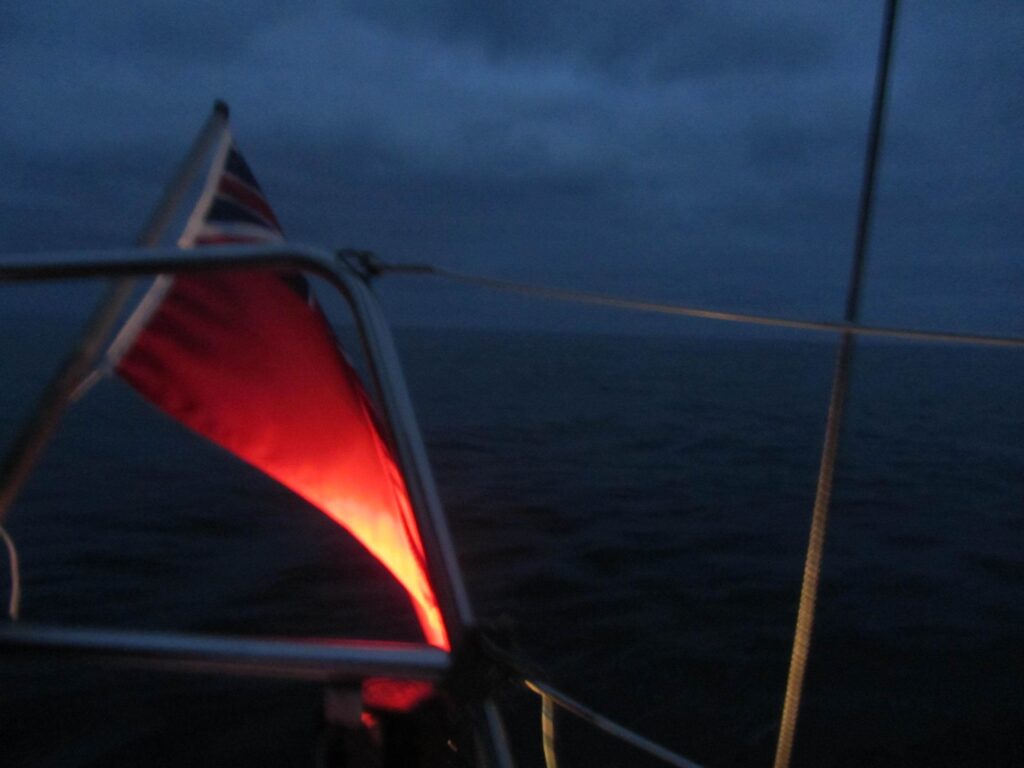
Precise passage planning across the Bay of Biscay involves examining weather patterns, tidal currents, and navigational hazards to guarantee a safe and efficient passage. When planning your sailing route, begin by studying detailed marine charts and weather forecasts.
The Bay of Biscay is notorious for its sudden weather changes, so it’s important to track pressure systems and wind patterns closely. To avoid dangers, plan your departure during the best time, typically late spring to early autumn, when the weather is more predictable.
Utilize advanced navigation tools like GPS and AIS to monitor real-time data and adjust your route as needed. Tidal currents can be aggressive, so timing your passage to coincide with favorable tides is essential.
Prepare your boat meticulously to withstand the potentially rough conditions of the Bay. This includes ensuring your rigging, sails, and hull are in top condition, and your safety equipment is readily accessible.
Have a contingency plan for emergencies and communicate your route with a reliable contact onshore.
What to Expect When Sailing the Bay of Biscay

When sailing the Bay of Biscay, you’ll need to be ready for sudden weather changes and challenging sea states.
Make sure your navigation instruments are calibrated, and your crew is proficient in heavy weather tactics, such as heaving-to and reefing sails.
Keep a vigilant watch for rogue waves and be prepared to adjust your course to avoid the worst of the swells.
Dealing with Unexpected Situations
The Bay of Biscay is essential for its unpredictable weather patterns and sudden squalls, requiring sailors to remain vigilant and prepared for rapid changes in sea conditions. As you navigate this challenging area, you must keep a close eye on the forecast to anticipate any abrupt shifts in wind direction and speed.
The continental shelf’s steep drop-off can cause significant wave height increases, potentially leading to a flood risk onboard. Ensure your bilge pumps are operational and your crew is trained to handle sea sickness, as rough seas can exacerbate this issue. It’s vital to be adept at quick sail adjustments and reefing techniques to manage the force of unexpected gusts.
Stay attuned to barometric pressure changes, which can signal approaching weather fronts. Equip your vessel with reliable navigation tools and always have a backup plan for alternative routes. Maintain constant communication with coastal stations for real-time updates.
Developing a culture of teamwork and readiness among your crew will foster a sense of belonging and mutual trust, essential for tackling the Bay of Biscay’s unpredictable challenges. With thorough preparation and vigilance, you’ll navigate these waters safely.
Avoid Army Excercise Areas and be prepared for meeting with training submarines.
Final Thoughts on Sailing the Bay of Biscay
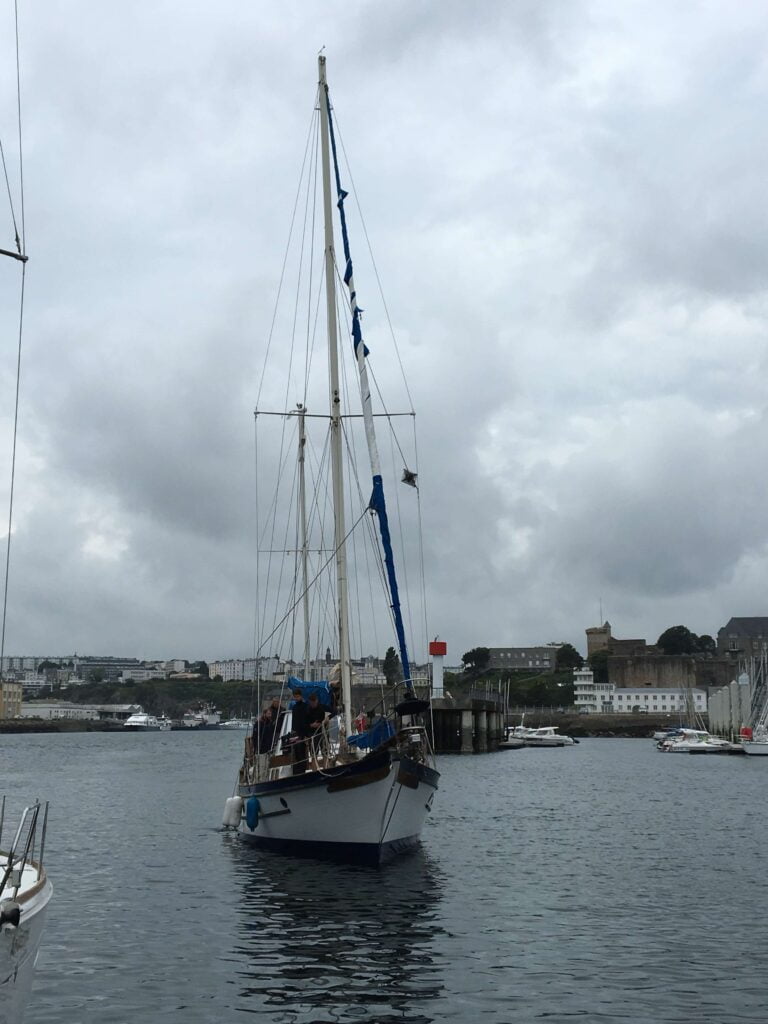
To conclude, successfully traversing the Bay of Biscay necessitates a profound understanding of its distinct weather patterns, attentive seamanship, and thorough preparation to guarantee a safe and efficient passage. From Brest to A Coruña, you’ll encounter various prevailing conditions, including the notorious winds at some point along the route, particularly near Cape Finisterre and the Costa da Morte. These areas demand heightened vigilance due to their treacherous nature. Don’t forget about tides and effect of meeting wind against the tide!
In your planning phase, it is crucial to meticulously evaluate weather forecasts, tidal patterns, and potential storm systems. Familiarize yourself with advanced navigation techniques and emergency protocols. Below is a summary table emphasizing key considerations:
| Aspect | Importance | Recommendations |
| Weather Forecasting | Critical for safety | Use reliable marine apps |
| Route Planning | Efficient passage | Chart multiple waypoints |
| Vessel Maintenance | Reliability | Inspect rigging and sails twice a day |
Seamanship includes continuously monitoring barometric pressure, wind shifts, and sea state changes. Equip your vessel with redundant navigation systems and ensure your crew is proficient in their use.
Popular routes after your Biscay Journey are in below posts:
- Atlantic crossing from East to West – details regarding popular East to West Atlantic routes
- Sailing Across the Atlantic: A Comprehensive Guide for Fellow Sailors – read it before your first Atlantic passage
- Sailing in Gibraltar – How to cross the Strait of Gibraltar? – how and when to cross Gibraltar Stait
- Sailing from UK to the Mediterranean – some datails about West to East crossing
- Atlantic crossing from West to East – details regarding popular West to East Atlantic routes
Frequently Asked Questions
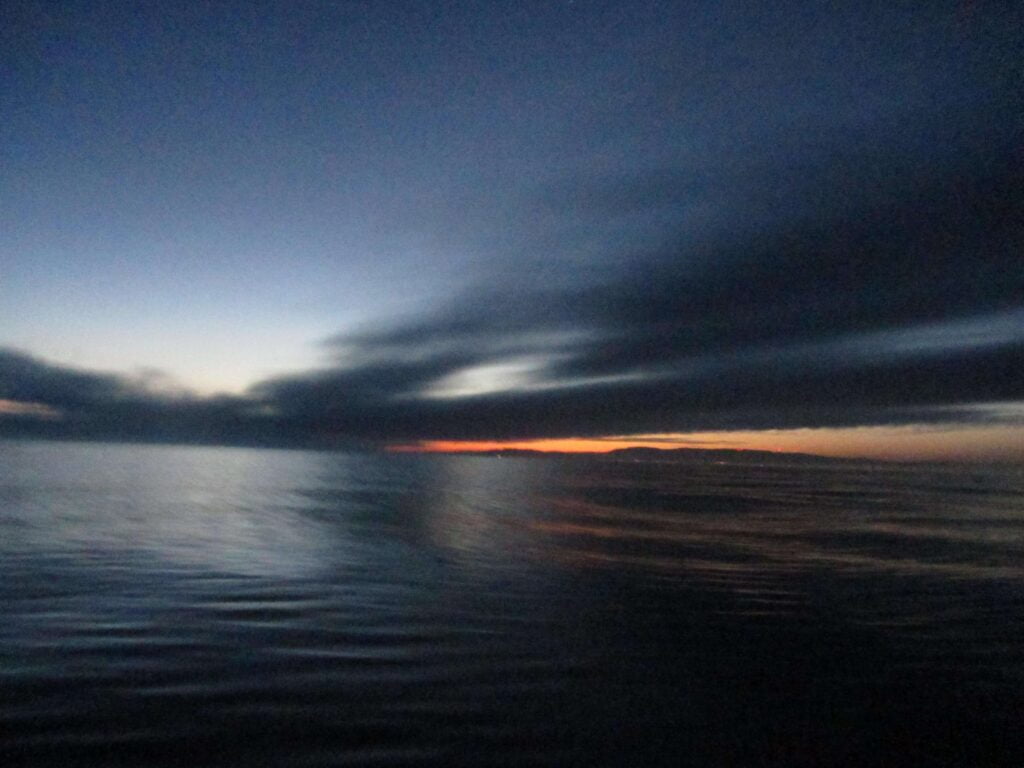
What Is the Average Sailing Time to Cross the Bay of Biscay?
The ideal sailing time to cross the Bay of Biscay is around 3-4 days, depending on weather conditions and vessel speed. You’ll need to monitor forecasts, utilize waypoints, and maintain peak sail trim for efficiency.
Are There Any Specific Legal Requirements for Sailing Across the Bay of Biscay?
Oh, legal requirements? Just make sure your vessel’s registered, your crew’s certified, and you’ve got all the obligatory safety gear. If bureaucracy’s your jam, wade through international regulations before you set sail. Happy sailing!
Is It Possible to Sail the Bay of Biscay Solo?
Yes, you can sail the Bay of Biscay solo. You’ll need advanced navigation skills, a well-prepared vessel, and real-time weather updates. Make sure you’ve got self-steering gear and emergency protocols in place for a safe passage.
What Are the Communication Options Available While Crossing the Bay of Biscay?
When you’re crossing the Bay of Biscay and want to stay ahead of the curve, consider VHF radio for short-range, satellite phones for global coverage, and AIS for vessel tracking. These guarantee seamless communication with your crew.
How Do Tides and Currents Affect Sailing in the Bay of Biscay?
Understanding tides and currents is essential. Strong tidal streams and unpredictable currents in the Bay of Biscay can impact your course and speed. Use detailed tidal charts and advanced navigation techniques to optimize your passage and guarantee safety.



